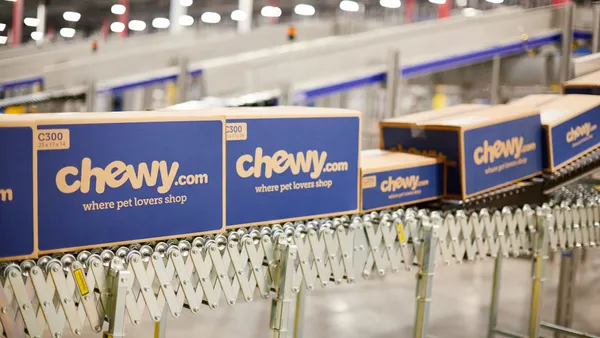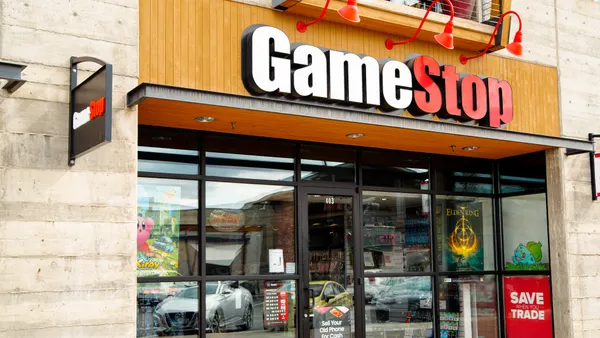Dive Brief:
-
The wider outlook for the retail industry is fairly stable, despite weakness in certain retail sectors, including specialty retailers, discounters and warehouse clubs, department stores, drugstores and office supply stores, according to research from Moody’s Investors Service emailed to Retail Dive on Tuesday.
-
Online growth, which Moody’s pegs at 8% to 9% of total U.S. retail sales, will continue to outpace overall retail growth, aiding retailers that do well online, according to the report.
-
Sub-sectors that are boosting the overall outlook include: home improvement, dollar stores, auto parts stores and off-price stores.
Dive Insight:
Once again, department stores got the brunt of Moody’s analysis. In addition to a 1% decline in sales, Moody’s forecasts a 7% to 8% decrease in operating profits for those retailers this year, not even counting struggling Sears. Department stores have been hard hit by shifts in shopping habits, slowing mall traffic and competition from e-commerce and off-price retailers, according to the report.
The faint growth remains the consequence of reticent American consumers, according to the report. “Consumer spending remains subdued, with gains in household wealth due to improved housing and equity markets a positive, although lower-income households are benefiting less than those with greater discretionary income,” Mickey Chadha, Moody’s vice president and senior credit officer, said in a statement emailed to Retail Dive.
Department stores aren’t the only retailers facing pressure. Discounters (like J.C. Penney) and warehouse clubs (like Costco) will also see operating profits fall this year, in the range of 4% to 5%, Moody’s analysts estimated.
Wal-Mart Stores Inc., which alone accounts for some three quarters of the discounters’ and warehouse retailers’ earnings overall, will see its operating profits dinged by its heavy investment in e-commerce, in worker training and wages, and by its escalating price war. That will help flatten that entire sub-sector’s 2017 operating profit. Target is similarly hampered by its efforts to boost its e-commerce, improve its grocery operations and drive down prices, Moody’s said.
Specialty retailers will also see flat operating profit this year, influenced highly by declines at Bed, Bath & Beyond, Rent-A-Center and Signet, Moody’s said. Drugstores should be prepared to suffer this year as well: CVS’s operating profit will be lower than anticipated and and both CVS and Walgreens will experience weak traffic. While Walgreens wrenched prescription business from CVS, the drug price competition won’t help its bottom line much. Meanwhile, the retail side of drugstores’ business continues to see tepid traffic and hefty price competition that will imperil profits. Similarly, when it comes to office supplies, stiff competition with each other and with non-traditional office supply sources like Amazon and warehouses clubs will hit Office Depot and Staples hard, Moody’s warned.
While e-commerce is growing briskly compared to retail overall, retailers’ online efforts are turning out to be expensive and that will mean that it will “take years” to see real growth, Moody’s said. Amazon, however, will continue “building on its clear advantage in this part of the market.”
The report isn’t all gloom and doom, though even some success stories outlined by Moody’s are dimmed somewhat by lean profits. “While we expect Costco to remain the best-in-class in global retail, its business is low margin and will limit overall growth for the sector,” Moody’s said, by way of example.
“Overall, the retail sector will continue to benefit from strong online growth trends, which for many is supplementing growth — most pointedly, for department stores,” according to the report. Among individual companies in the better-performing sectors, Moody’s singled out Home Depot, Lowe's, Dollar General, Dollar Tree, Advance Auto Parts Inc., Autozone and O'Reilly Automotive, Inc.















